Begonia Elatior is a popular houseplant that fascinates with the beauty of its flowering against the background of the ideal shape of glossy leaves. The variety belongs to hybrid species, and its peculiarity is considered capriciousness to the conditions of detention. It is important to thoroughly study how to properly care at home, so that the begonia Elatior feels good and pleases with flowers.
Content
The history of growing begonia Elatior and signs
This begonia variety belongs to hybrids obtained by crossing Socotran and tuberous varieties, with which the plant is often confused.
There are signs that begonias bring prosperity and prosperity to the house. In addition, the flower absorbs all the negative energy that enters the house from the outside with strangers and objects.
According to signs, begonia is of great importance for those involved in business. So, a flower not only gives confidence to its owner, but also improves intuitive abilities and flair. The plant will help to avoid failed trades and failures at work. Begonia flowering accompanies the success and prosperity of a business.
Begonia will also help in love affairs - with its help it is easy to find a soul mate. A plant with red flowering is recommended to be put in the bedroom - it will help remove all quarrels from the relationship and establish the sex life of partners. The sudden flowering of the plant indicates the coming replenishment of the family. But white and pink begonias are best placed in the hallway to improve the aura and relationships in the family.
Begonia characteristics and species diversity
The begonias of Elatior belong to the genus Begonias. These are widespread hybrids, the second name of which is Winter Begonia. This variety is represented by perennial herbaceous plants that reach 40 cm in height. The stem of the plant is thick and fleshy, the leaves on it are arranged alternately.
Each leaf reaches 10 cm in length and has a shape similar to a heart, with wavy edges and a long stalk, which is attached to the stem. The upper part of the sheet has a bright green color and a glossy surface, and the inner part is distinguished by a light green hue, a rough matte surface and protruding veins.
The bright and abundant flowering of begonias looks gorgeous against a background of glossy saturated green leaves. The diameter of the flowers reaches 6 cm, and the buds themselves are collected in lush inflorescences on a high stalk, due to which it is clearly visible above the surface of the leaves. The plant begins to bloom in mid-autumn or early winter and lasts for 6 months.
All varieties of this begonia are classified by stem height. So, there are tall, medium and stunted flowers. Tall ones reach 40 cm in height and more, medium-tall ones on average have a height of 30-35 cm, and low-growing ones - up to 20-25 cm.
Tall varieties
Schwabenland is considered one of the most popular varieties, which differs from other species in small red buds and lush inflorescences.
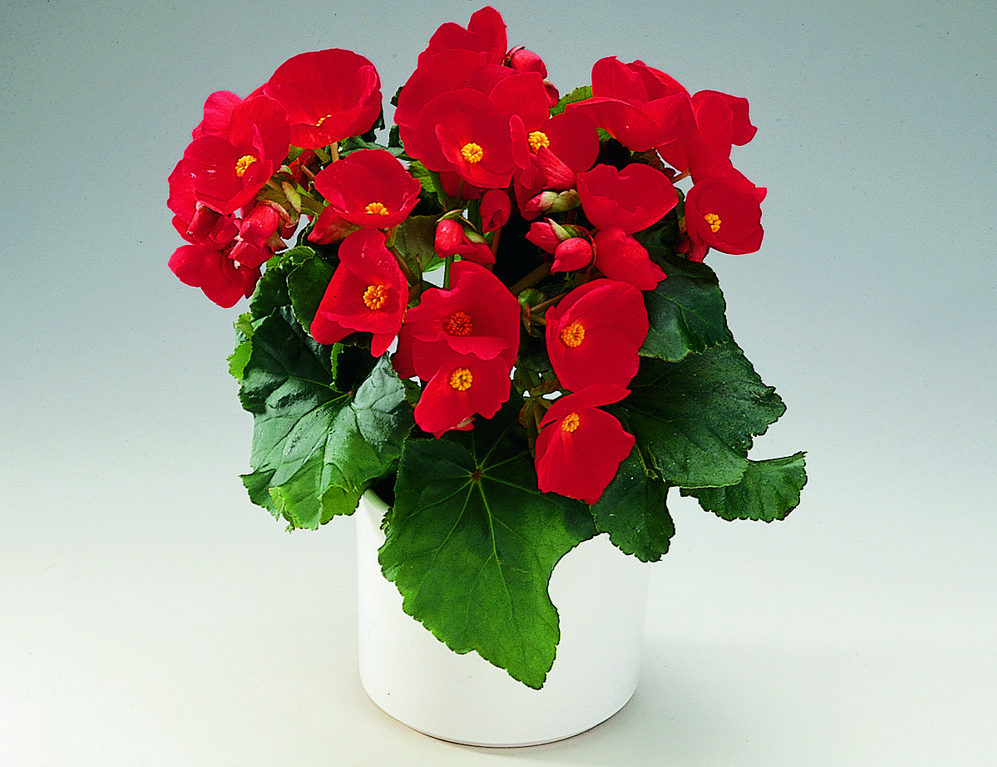
Variety Renaissance can not be overlooked due to terry fluffy large leaves of orange-red color with wavy edges.
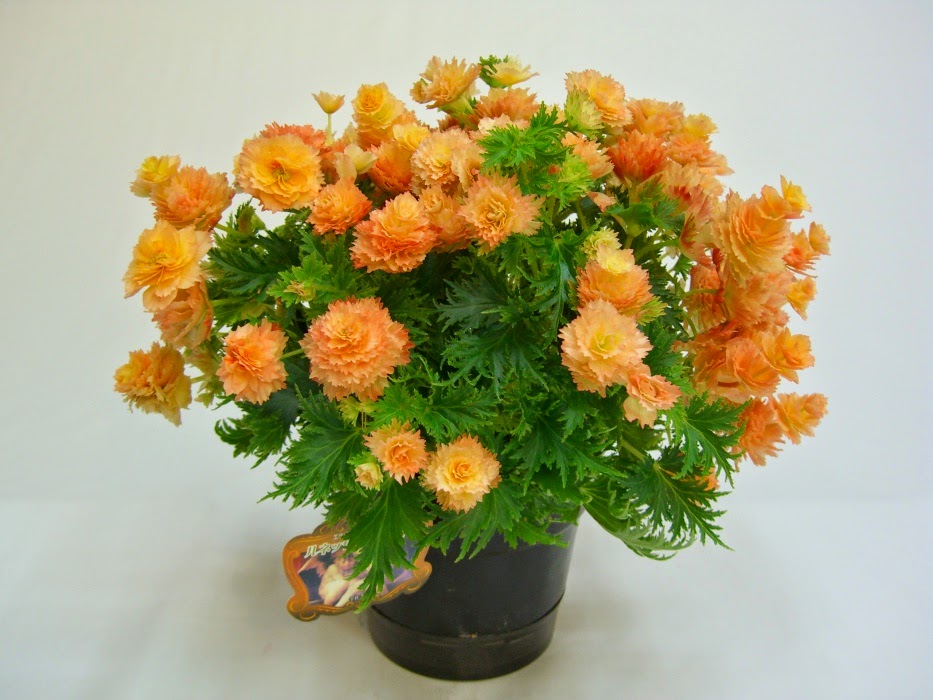
Louise flowers attract attention with large beige flowers with a pink tint.
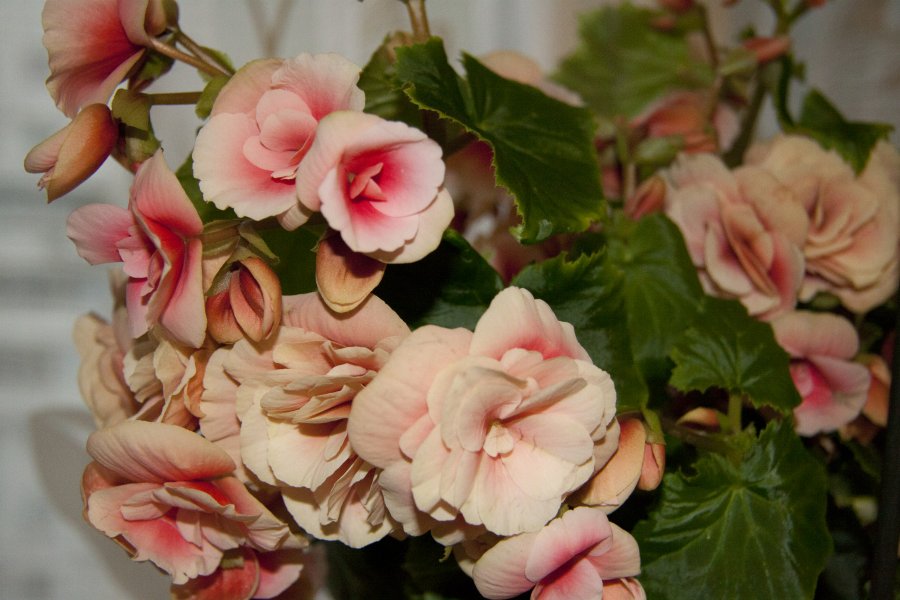
Medium
The medium-sized Annebell cultivates with semi-double pink blooms.
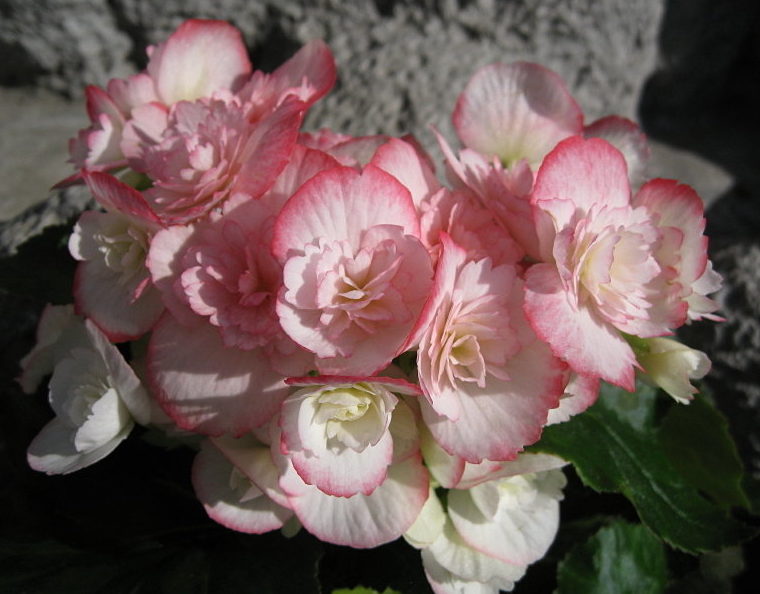
Goldfinger variety has large lush terry flowers of delicate shades, most often beige and pink.
Bellona deserves attention due to its large terry red buds.
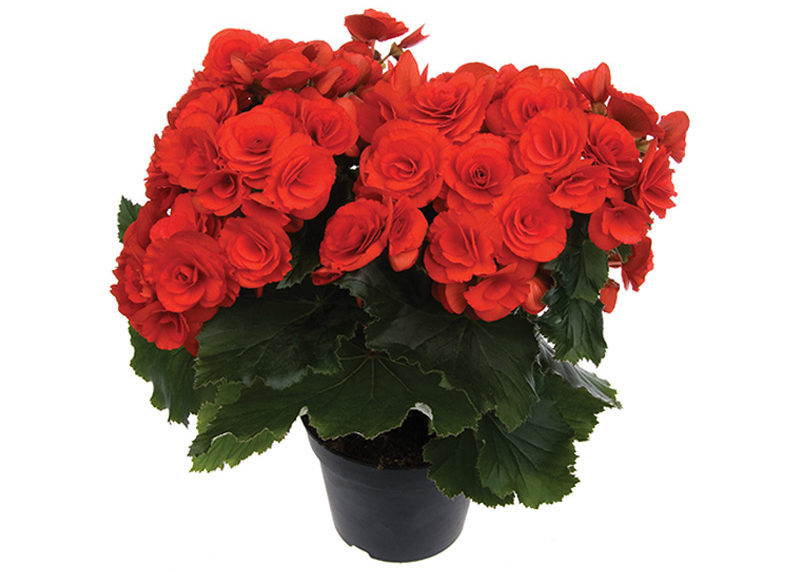
Undersized
The undersized Piccora variety compares favorably with the rest thanks to the bright pink terry inflorescences.
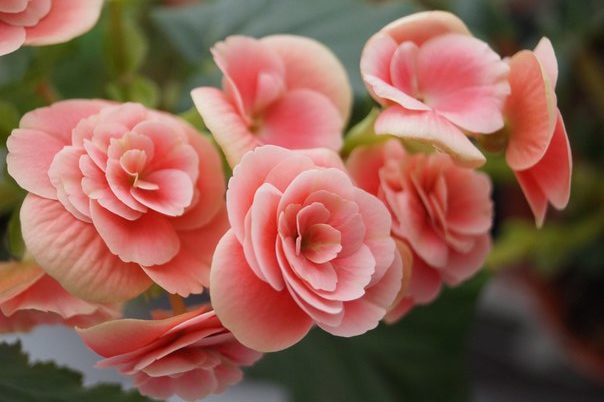
Rosa, unlike the previous one, has a dark pink bloom.
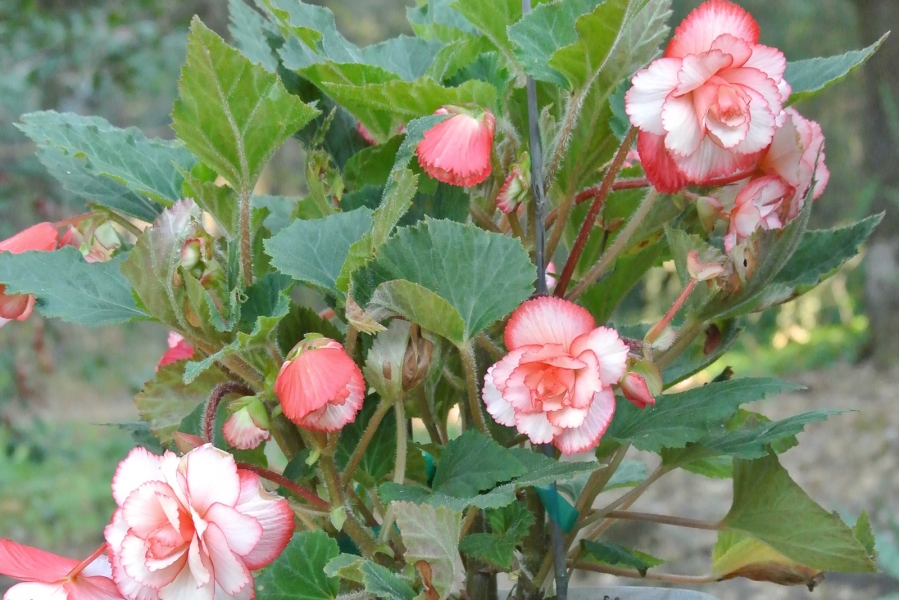
Scharlach flowers have a rich orange color with a red tint.
Begonia cultivation and home care
Growing begonias is a very painstaking and time-consuming task, and the flowers are quite picky about the care. So, even the smallest changes in the conditions can provoke a slowdown in growth and plant disease.
The soil
An important condition for begonias is easy access to the soil of air and water. At the bottom of the pot, a drainage layer of small pebbles is always laid out. In addition, the substrate must be nutritious and contain all organic substances. The soil for begonias can be purchased ready-made.
Watering and feeding
Watering begonias should not be excessive. The main rule for growing these flowers is that you need to give the substrate time to dry. Experts recommend watering when the surface layer becomes completely dry, which can be determined using a toothpick immersed in the soil. Stagnant water in a pot or permanently moist soil can cause rotting of the root and aboveground parts, which will lead to the death of the flower.
In the cold season, watering is reduced. It is necessary to water exclusively with filtered water, since the flowing water is too hard. Also in spring and summer in the evening, the flower is sprayed with a small amount of warm water.
In dressing, experts do not recommend the use of fertilizers with a high nitrogen content, since it contributes to the accumulation of water in the already fleshy stem, which quickly leads to decay of the flower. In addition to the stem, the rest of the plant also suffers. So, petioles of leaves also become watery and brittle, buds and leaves become dull and lose their elasticity.
The plant is prone to rot disease. That is why it is worth giving preference to mineral fertilizers. Feeding this species once a week is necessary during the period of active growth and flowering. The standard single dose of fertilizer, which is written on the package, must be divided by 2, since the flower is very sensitive to the effect of feeding.
Light and temperature
One of the features of begonias is that direct sunlight negatively affects plant growth. Being in direct sunlight in the open air will quickly provoke the appearance of burns on leaves and petals. Also, direct rays can provoke a decrease in the size of the petals, which will make the inflorescences smaller in size.
Begonia refers to heat-loving flowers, because the temperature of its content should not be less than 18-20 degrees.In addition, it is not recommended to put the pot in drafts and in cool places. Low temperature and its sharp drops can provoke rotting of the stem and root system, as well as falling leaves.
Diseases, pests and their control
Most often, such begonias can develop that are directly related to improper care of the flower. The appearance of rot and fungal lesions, which look like rough or plaque-limited areas with fungus or rot of different colors. Such diseases appear with excessive amounts of water both in the soil and in the air. Low temperatures can also provoke them.
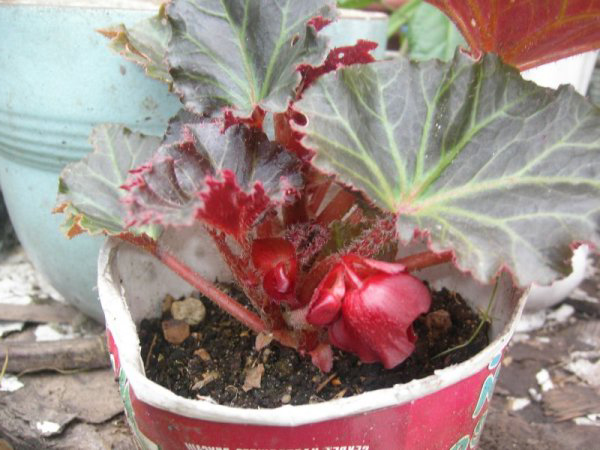
Falling flowers, blackening and drying of the edges of the leaves may indicate insufficient watering and drought. Also, begonias often have burns on the leaves due to prolonged exposure to direct sunlight. For the treatment of diseases, it is necessary to optimize the conditions for growing flowers and treat with fungicides in cases of fungal diseases.
The most common parasites are ticks, aphids and mealybugs. You can fight them with the help of insecticides, as well as the mechanical processing of leaves and damaged parts with a cotton swab moistened with dichlorvos. In addition, before treatment, damaged parts of plants must be cut off and treated with crushed charcoal.
Home care for begonia Elatior
In addition to home care, you must be able to provide proper care during the adaptation of the plant to a new place, at rest and in winter.
After the purchase
First of all, still in the store it is necessary to examine the flower for integrity and the presence of parasites and diseases, since sometimes sick or infected plants can sell. At home, you need to choose the location of the flower and provide it with all the necessary conditions for growth.
After flowering
After flowering, experts recommend first to prune the inflorescences. It is also necessary to stop fertilizing. Begonia stops flowering in the middle or end of summer and enters a dormant period. At this time, you also need to reduce watering and allow the flower to regain strength.
In winter
In winter, not only the frequency of irrigation, but also the amount of water is significantly reduced. The plant is not fertilized in the winter. The flower does not require additional lighting. In winter, it is necessary to carefully monitor the temperature regime, since the flower does not tolerate temperature fluctuations and cold air flows.
Before the beginning of winter, it is necessary to prune the plant and leave the cuttings 7-10 cm long so that the flower does not lose its shape. In late winter and early spring, before the period of active growth, it is recommended to add growth stimulants to the substrate to obtain abundant flowering in the future.
How to propagate and transplant a flower at home
In order for the plant to bloom and grow abundantly, it is necessary to be able to transplant it correctly, pick up a pot and propagate it.
Pot selection
First of all, you need to pay attention to the size of the pot. So, for young seedlings, it should be 8-10 cm in height, and for each further transplant, its size should increase by a third of the previous one. So the capacity will not be too spacious, which can lead to decay of the root system. Also, the pot must have several drainage holes. The shape of the pot can be any.
Transfer
First of all, for a transplant, you need to prepare a new pot.The container must be washed thoroughly in hot water. Ceramic are treated with boiling water and soaked in water for a day. At the bottom of the tank, a layer of charcoal is initially laid out, on top of which a layer of drainage of several centimeters is laid.
Begonia should be abundantly watered and left for an hour. After this, the flower must be carefully removed from the pot and carefully inspected for damage. Damaged parts are cut off, and the root system can be treated with potassium permanganate in order to prevent the growth of microorganisms.
The plant is placed in a new pot and covered with a substrate. The top layer must be fluffed in order to increase air permeability. The neck of the plant should not be underground.
Breeding
Begonia propagated by cuttings of leaves or stems. To do this, cut off 10-12 cm of the stem or simply tear off the leaf.
The young plant is rooted in water, into which several tablets of activated carbon are added to prevent infection by microbes. The shoot is kept in the same conditions as a mature flower. A rooted young plant is planted in a pot up to 10 cm high.
Common questions
Reviews about begonia elatior with photo
Valeria: “I just bought a variety of elatior and am very pleased, the flower is really very beautiful. I bought it already as an adult, but in a deplorable state - the plant was completely infected with a fungus. I thought I didn’t go out of it, but Zircon advised me. This tool is used to treat and prevent fungal and bacterial diseases. In the photo, my begonia a few months after recovery. "
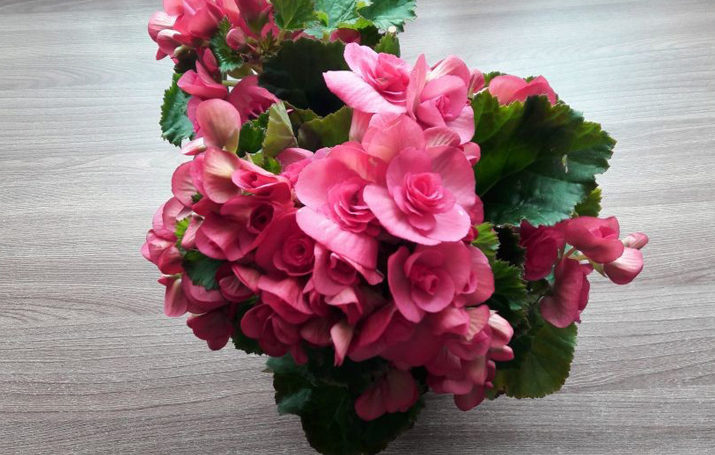
Karina: “Before, I already had this kind of begonia, only when I went on a business trip, my husband did not inspect, and it withered. And now I bought it again, and I am very pleased. However, having come home after the store, I noticed that it was too flooded and immediately put the pot on a napkin to remove excess moisture. But in general, I am very pleased with the flower. ”
Begonia Elator is a common decorative hybrid species. The plant is quite whimsical to care for and requires a lot of attention and constant care.

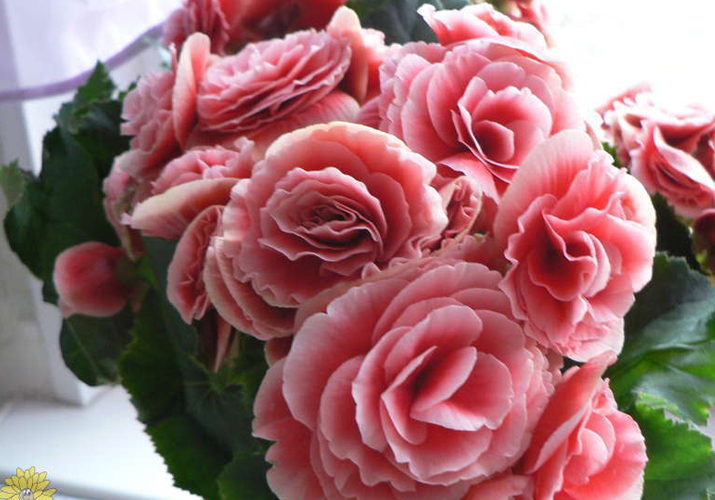
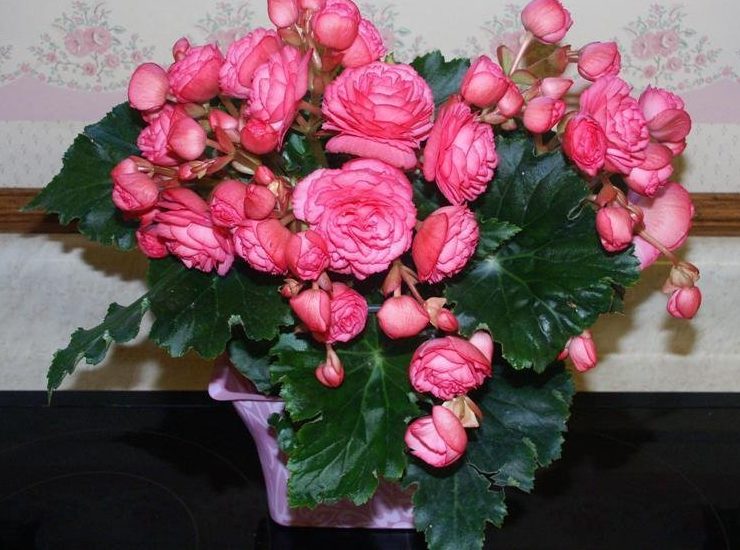

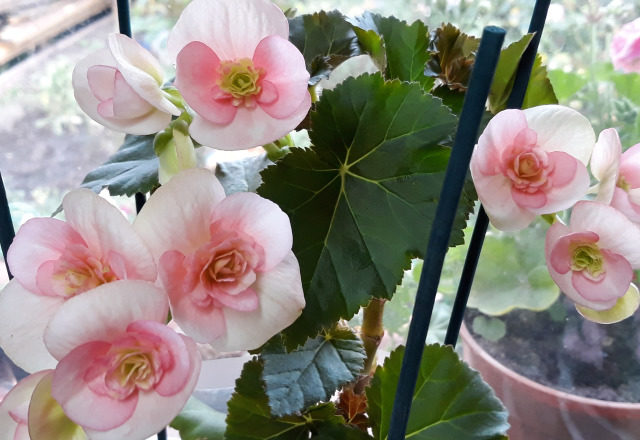
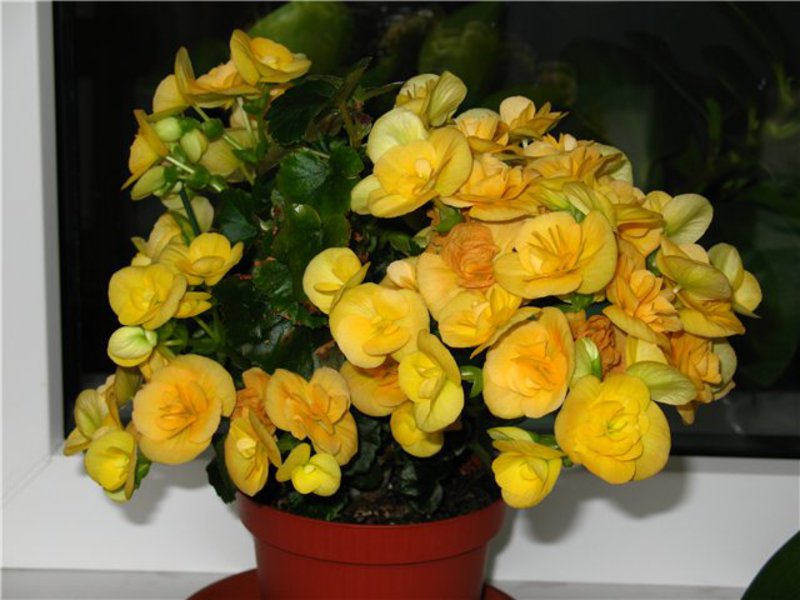
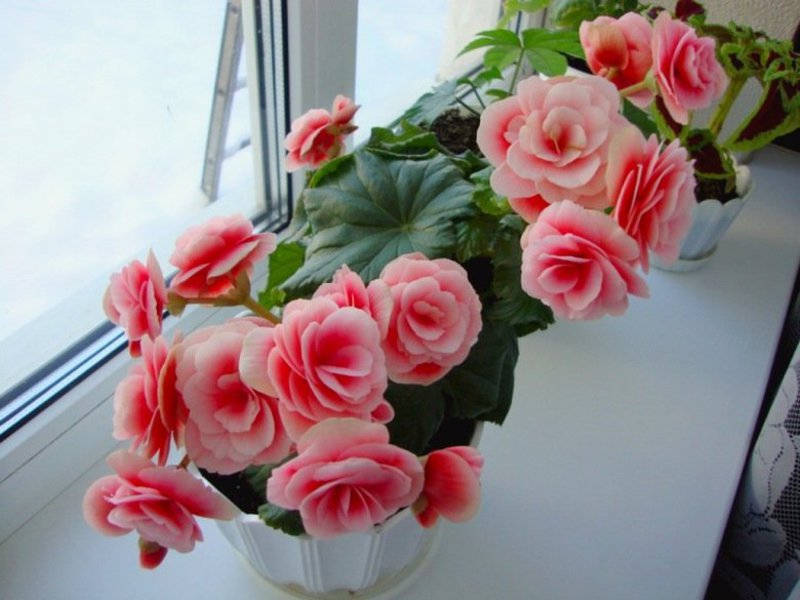



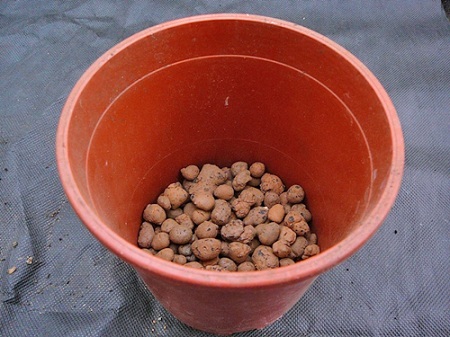
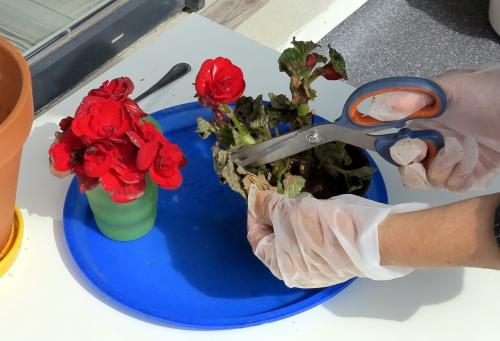
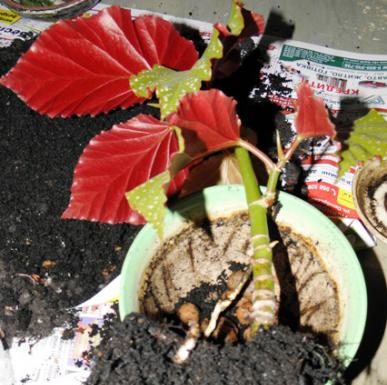
 10 beautiful annuals that bloom all summer
10 beautiful annuals that bloom all summer Sow in the ground, without seedlings: 10 beautiful and unpretentious flowers
Sow in the ground, without seedlings: 10 beautiful and unpretentious flowers Platicodon planting and outdoor care
Platicodon planting and outdoor care Hosta - planting and care in the open ground in the Urals
Hosta - planting and care in the open ground in the Urals